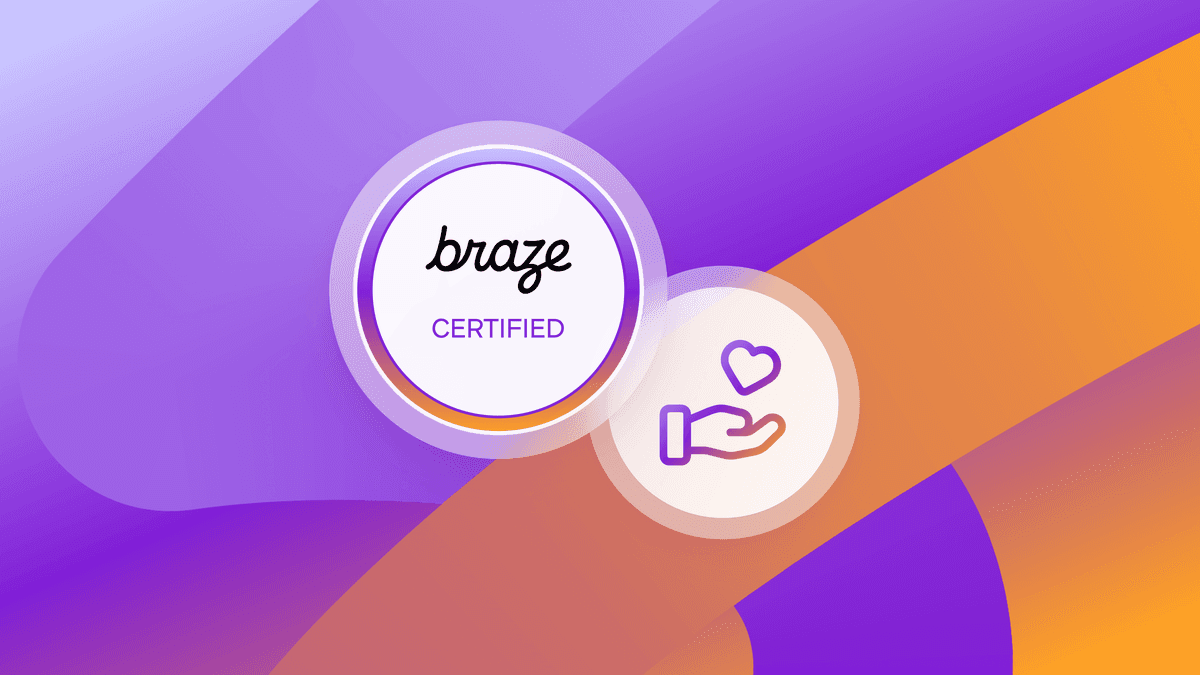How Personalized, Cross-Channel Engagement Supports Effective Loyalty for Retailers
Published on April 28, 2020/Last edited on April 28, 2020/5 min read

Published on April 28, 2020/Last edited on April 28, 2020/5 min read


It goes without saying that retailers face tremendous challenges—from an unprecedented, fast-changing global health and economic crisis to the long-accelerating shift in consumer behavior driven in large part by the rise of mobile. To stay competitive, especially right now, retailers are laser-focused on sustaining customer loyalty.
Counterintuitively, the best way to address these challenges may not be to launch a loyalty program or blast your audience with communication around points and tiers. Instead, you should focus on how well your brand understands your customers and their needs today—in the moment—and ensure you have the tools to communicate your value in ways that make sense to them. Let’s dig into what that looks like.
Every retailer wants their customers to come back over and over again. But this doesn’t just happen. It takes the right mix of data, technology, and teamwork to imagine, develop, and execute the kinds of brand experiences that drive real loyalty. Though there are no shortcuts for getting there, there’s still a way. Use these fives rules to ensure that you’re taking the necessary steps to bolster loyalty even in the toughest of tough times:
Your customers aren’t simple email addresses and phone numbers—they are people, with likes and dislikes, routines and habits, emotions and impulses, quirks and complexities.That means that in order to understand them effectively, you need to ensure that you have foundational tools in place to give you the in-the-moment picture of how they’re engaging with your brand’s platforms and channels.
Generic blast messaging has a long history in the marketing space, from junk mail sends to full-audience batch-and-blast email campaigns. Of course, yesterday’s tricks don’t make sense in today’s customer engagement landscape.
According to MarTech Advisor, 90% of consumers are annoyed by marketing that isn’t relevant to them as individuals. No surprises there. You have already spent significant time and resources building relationships with your customers, and you need to send messages that don’t jeopardize those relationships. Personalization tools that support individually relevant, responsive content contributes to your reputation as a brand that doesn’t batch and blast.
Personalization isn’t just including customer names in messages or pulling products they’ve browsed—it goes deeper into the mechanics of brand experiences, down to what messaging channels you use to reach customers. Every channel serves a different marketing need and every consumer has their own unique preferences when it comes to how and when they hear from you. That can mean a unique mix of channels, preferred message delivery times, and more.
Retailers need to target and personalize the messages they send in every channel of their marketing and transactional message mix. And those channels must be aware of each other: retailers must also have tools to orchestrate a cross-channel strategy to support thoughtful, valuable experiences for the customers they’re reaching. Getting it right can boost engagement by up to 844%!
Here’s the thing about data: It doesn’t have any value on its own. If you just collect it and don’t act on it, there’s no point in collecting in the first place. But data means something when you have the right systems in place. Contextual data that shoppers share with retail brands—like location, purchases, and their behaviors—become the triggers for automated, highly-responsive outreach that speaks to customers effectively and drives them to engage more frequently.
What does that look like today? Sending automated follow-up transactional messages like receipts and shipping confirmations when a purchase takes place or notifying a customer automatically when an item they’ve favorited comes back into stock, for example.
Providing 1:1 experiences to retail customers at scale requires automation—after all, no brand has enough marketers to individually customize and target messages to millions of customers without the help of technology. But retailers know they must go beyond traditional marketing automation (getting a high volume of messages out) to use artificial intelligence (AI)/machine learning to automatically adjust and personalize brand experiences in unprecedented ways.
From intelligent channel selection to send-time optimization, these capabilities smooth out the customer experience, supporting more seamless engagement for audiences of any side, as well as stronger customer/brand relationships going forward. Put simply, things make more sense to your customers when messages arrive at reasonable times and through convenient channels.
It’s true: Offering rewards and discounts is one way to stay on your customer's radar. However, those techniques have a nasty tendency to cut into already thin retail profit margins. Avoid the trap of treating your customers like numbers who all get the same offers, no matter what.
Ultimately, when it comes to retail marketing in a tough environment, you have a choice. You can turn inward, stick a finger in the wind, and hope that you come up with a strong customer retention strategy . Or you can leverage data about preferences, behaviors, and propensity that your customers reveal to you to evolve your strategy, To learn how retail brands can build stronger, more lucrative connections with their customers, even in difficult times, check out the Braze Brand Humanity Retail Study.
Sign up for regular updates from Braze.




